[pagebreak:CeatecSlideshowOLEDsHomeFuelCellsandthe3DTV]
CHIBA, Japan -- The 3D television set. A solar city. The solar phone. These products and more were on display at this year's Ceatec, Japan's version of the Consumer Electronics Show.
Japan has been a major producer and consumer of solar panels and energy efficiency technologies since the oil shocks of the early 1970s. Many manufacturers now want to expand on the country's export potential.
That said, here are some of the energy-efficient products and technologies on display at this year's show.

The Mitsubishi MiEV, the all-electric car that was released earlier this year. It's part of a zero-energy home display. One of the more interesting ideas from Panasonic and Sharp are homes that can run at least partly on DC power. A full DC house could improve energy efficiency by around 10 percent.
[pagebreak:Ceatec Slideshow]
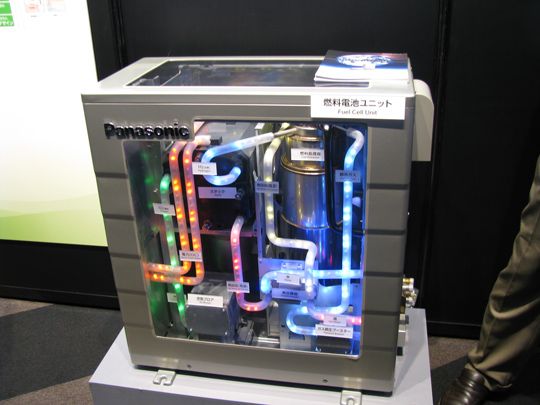
A model of a home fuel cell from Panasonic. The company began to release them this year. The fuel cells take natural gas and convert it to heat and electricity. Like a lot of Japanese companies, Panasonic wants to start exporting what it has here.
[pagebreak:Ceatec Slideshow]

A chandelier made from OLEDs from one of the national laboratories.
[pagebreak:Ceatec Slideshow]
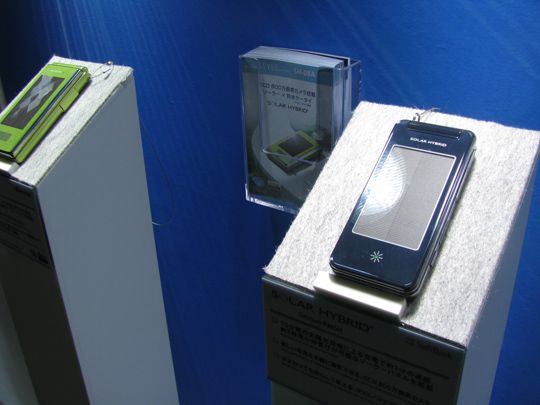
A solar phone from Sharp. The panel generates 300 milliwatts, but a future one will generate 450 milliwatts. Ten minutes of sunlight gives you one minute of talk time. Not a bad way to supplement the batteries. Vending machines here sell plug-in supplemental power units for phones. They contain two batteries. Just plug in and go.
[pagebreak:Ceatec Slideshow]

This is an experimental 32-inch TV that only uses 32 watts. The company developed a hot cathode fluorescent bulb for it. It only needs two bulbs, versus the usual ten plus. Fluorescent bulb TVs actually do better in terms of energy than LED sets, but that will change.
[pagebreak:Ceatec Slideshow]
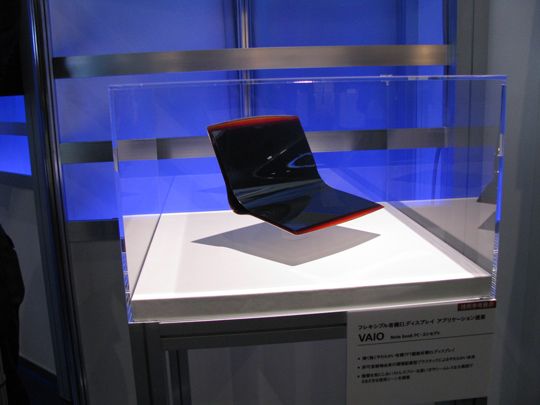
A concept of a notebook with an OLED screen from Sony. Sony also wants to bundle e-books with OLEDs. The price is a challenge.
[pagebreak:Ceatec Slideshow]

This is a 3D television from Toshiba that will be released soon. One of the key advantages is that you don't have to have specially processed 3D entertainment. The Cell processor inside of it, which is the same as the one inside the PlayStation 3, can do it. You can also watch in TV. Is it green? No, but you might buy it.
[pagebreak:Ceatec Slideshow]
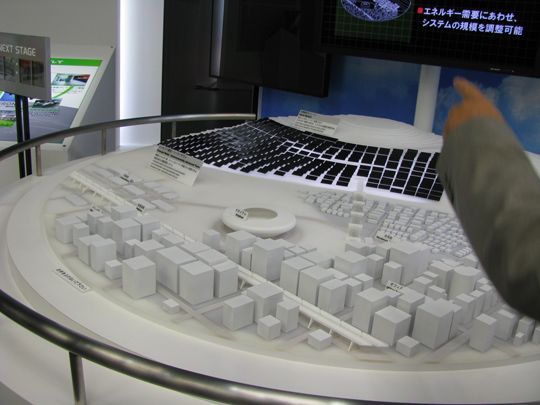
A model of a solar city from Sharp. No one has moved in yet.
[pagebreak:Ceatec Slideshow]
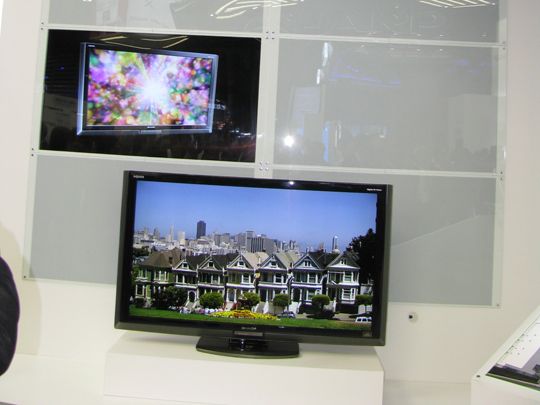
A tenth-generation piece of motherglass from Sharp. You can pop eight 60-inch TVs out of this and one day it will be used to produce solar cells. These sheets of glass will be processed in the upcoming plant in Sakai.
[pagebreak:Ceatec Slideshow]

An OLED bracelet from Rohm and some OLED lights. A lot of companies here are big on OLEDs, which are incredibly efficient and thin, but it will take time to come to market.
[pagebreak:Ceatec Slideshow]

Whoo! A swirly tower of amorphous silicon solar panels from TDK.
[pagebreak:Ceatec Slideshow]
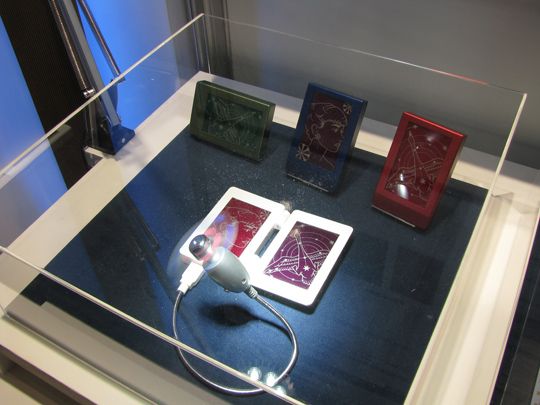
Solar panels from TDK that employ solar dye. Those silver lines are the contacts. No rigid grid of wires for TDK.
[pagebreak:Ceatec Slideshow]

Night scene in Ginza. Japan knows electric signs.


